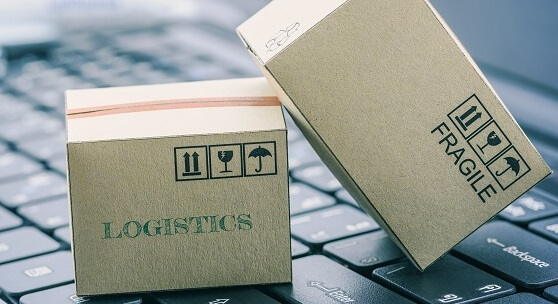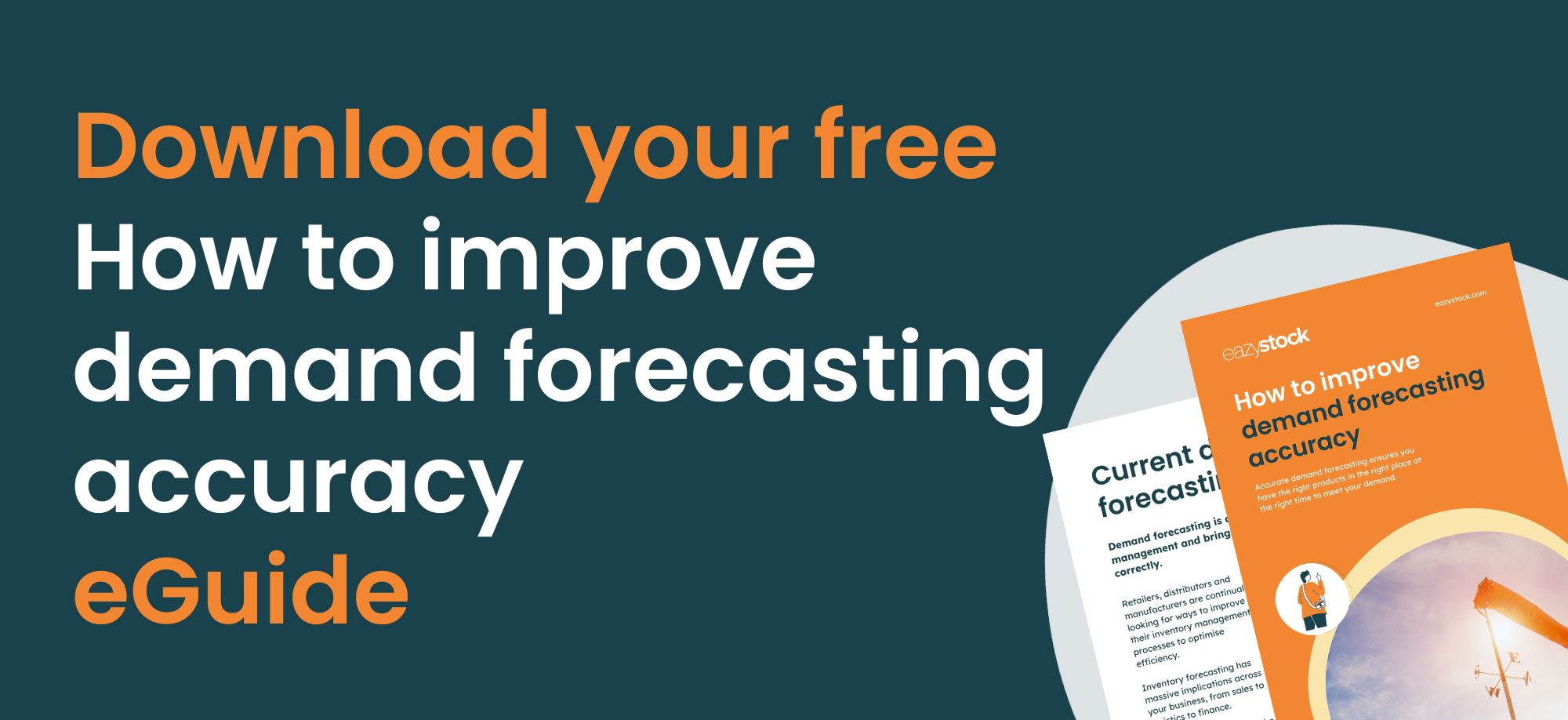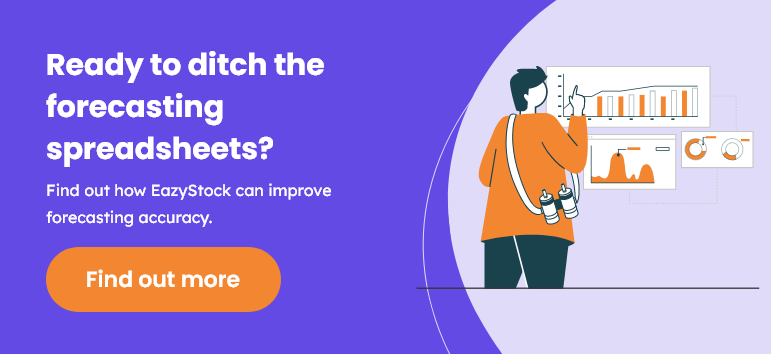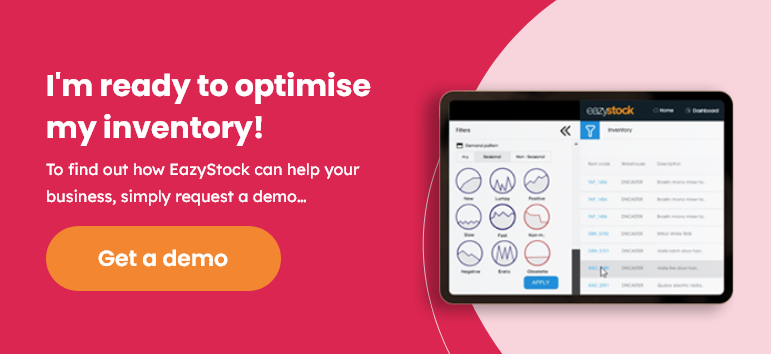How to improve inventory forecasting and replenishment
Inventory forecasting and replenishment
Stock availability and speed of delivery are key factors for businesses in both B2B and B2C marketplaces. If you can help your customers meet their customers’ expectations, in terms of convenience, choice and price, you’ll become their long-term ‘go-to’ supply chain partner.
Efficient inventory forecasting and replenishment are key to achieving stock availability and service level targets. The starting point for replenishment planning is accurate demand forecasting – your business needs an in-depth understanding of the demand for each and every item in your warehouse to help inform purchasing decisions. Also, as a supply chain professional, you need to know you have accurate demand forecasts feeding into your replenishment calculations, to achieve your service level targets on a regular basis.
Below we discuss how this can be done:
Use statistical forecasting for greater replenishment accuracy
Your enterprise resource planning (ERP) or warehouse management system (WMS) will, no doubt, have some demand forecasting capabilities. They usually do this by basing calculations on previous demand data and using this to predict future needs. But, this approach has a number of limitations, the two most obvious being:
- It assumes that the same customer demand that was experienced previously will occur again, therefore ignoring seasonal factors and long-term trends.
- It assumes all SKUs are alike in terms of their position in the product life cycle and their consequential demand patterns.

As we’ve discussed in many posts on demand forecasting accuracy, over-simplistic forecasting calculations lead to forecasting errors. That’s why more and more inventory planners are turning to statistical demand forecasting; it’s a great way to improve forecasting accuracy. If partners in your supply chain are already using sophisticated demand forecasting methods to enhance their replenishment operations and you’re not, it’s time to act.
A simple step to improving your forecasting activity is to identify items with seasonality and those affected by trends. You can then adjust your predictions accordingly.
Go granular – forecast and replenish at SKU level
A more advanced forecasting and replenishment technique is to treat each stock item in your product portfolio individually. For example, let’s take the product life cycle. We know every item you hold will be at a different stage of its product life cycle, whether this is introduction, growth, maturity or decline. And, at each phase, a product will be experiencing a different pattern of demand, e.g. during growth, demand will be on an upward trend, whilst during the end of maturity, demand may become more erratic as sales start to drop off.
If you identify and categorise items into their inventory life cycle stages, you can then apply the most relevant statistical algorithms to produce the most accurate sales forecasts.
Precision forecasting needs to be regularly updated
Your customers’ marketplaces are constantly changing, so they will be updating their demand forecasts on a perpetual basis. As their supplier, you need the capabilities to do the same.
Gone are the days of producing a demand forecast and updating it every month or quarter. You need the ability to refresh your forecasts much more frequently. If you’re using spreadsheets and have thousands of SKUs, this is obviously no mean feat. It may, therefore, be time to consider demand forecasting software that will re-calculate the forecasts of each SKU on a daily basis, so they remain as accurate as possible to inform inventory replenishment planning.
Always add the human element to forecasts
It’s important that you don’t rely 100% on statistics to create your forecasts. Always combine baseline statistical forecasts with qualitative forecasting inputs from humans who have factual knowledge about your marketplace and your supply chain partners. For example, if a customer has big expansion plans, or another is planning promotional activity, these events need to be factored into your forecasts, as they obviously won’t be represented in the historical data used to produce your baseline calculations.
Allow for forecasting errors
Even the most sophisticated demand forecasting methods will never deliver 100% accuracy. So, it’s important to calculate your forecast error range, check for demand outliers and make the relevant adjustments. Wholesalers should also carry safety stock as a buffer for any inaccuracies and to reduce the risk of stock-outs if demand exceeds your forecast.
Share your forecasts and replenishment needs with your suppliers
Effective inventory replenishment isn’t only reliant on accurate forecasting down the supply chain. You also need to consider what’s happening upstream. For example, your supplier lead times can have a big impact on whether you hit your fulfilment and service level targets. Therefore, it makes sense to work closely with your suppliers and understand how you can help them improve their service to you.
More and more manufacturing suppliers are requesting accurate order forecasts so they can plan their production schedules accordingly. With EazyStock, it’s possible to predict your reorder requirements up to a year in advance. You can then share this information with your suppliers, who can plan their operations. In return, you can negotiate the best price and push for their best service.
The future of forecasting and replenishment
The digitalisation of supply chains is happening right now. For supply chain managers in any industry, this means you need the best forecasting and replenishment processes to keep up with your customers’ expectations.
Make sure you understand the forecasting and replenishment capabilities of your ERP or WMS.
Here’s a quick checklist:
- Can it carry out statistical demand forecasting at SKU level, accounting for product life cycles, seasonality, trends and human inputs?
- Can it dynamically calculate reorder points and reorder quantities based on forecasts, stock on hand and in transit, safety stock levels, and your target service levels?
- Can it take supplier lead times into account and adjust re-order points and quantities accordingly?
- Can it provide long-term order projections to share with your suppliers?

If your system lacks in any of these areas, it may be time to invest in automated inventory planning. Remember, this list only covers the forecasting and replenishment basics; it’s not exhaustive. Any good inventory optimisation software can deliver much more. For more details, this post compares a typical ERP to EazyStock, or you can request a demo from one of our inventory optimisation experts.











